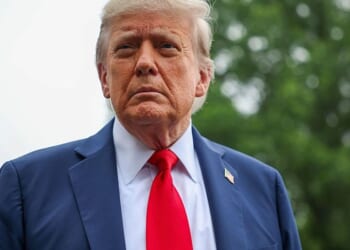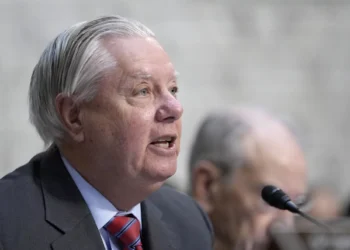“April 2, 2025, will forever be remembered as the day American industry was reborn, the day America’s destiny was reclaimed, and the day that we began to make America wealthy again,” President Donald Trump proclaimed in his Rose Garden speech that day announcing wide-ranging tariffs. Many feared that his tariffs would prove costly for American consumers via higher prices, as well as hit the stock market with a downturn.
The Trump-deranged Leftmedia generally sounded like the hilariously apocalyptic “Ghostbusters” warning of “cats and dogs living together — mass hysteria!”
Markets certainly endured a rocky patch immediately following Trump’s announcement, and more volatility ensued with each subsequent rope-a-dope shift in rates he made. Yet in the last two months, things not only stabilized but took off.
“The April swoon that carried the S&P 500 to the brink of a bear market has been erased and then some,” reports The Wall Street Journal. “The broad index has now added more than 9% since President Trump announced sweeping tariffs that sparked havoc in markets.” In recent days, the Journal adds, “Both the S&P 500 and Nasdaq Composite Index hit fresh all-time highs.”
The Dow Jones Industrial Average has risen by nearly 5% since April 2, while the Nasdaq has risen roughly 15%. (All three are down slightly this morning as I write this.)
Stock markets are a key barometer for consumer confidence. One way or another, roughly 62% of Americans are invested in the stock market. That means investors are not only “the rich” but are regular Joes with retirement accounts. Incidentally, 62% happens to be the same percentage of Americans who have jobs. Of course, that’s a Venn diagram with some, not total, overlap, but it’s fascinating.
So far, tariffs have not caused the predicted spike in inflation, either. It ticked up to 2.4% in June from 2.3% in May, but it’s still generally on the right trajectory after Joe Biden and the Democrats dropped a bunker-busting inflation bomb on America in 2021. It’s true that most of Trump’s tariffs haven’t really kicked in yet (because they’re negotiating tools rather than final numbers), but he has applied tariffs to China, which accounts for an awful lot of goods on the market.
The monthly jobs report will be released this Thursday, but May’s report indicated continued job growth and a headline unemployment rate of 4.2%.
“Experts” expect both inflation and unemployment to rise with June’s reports, but how many times have you read headlines about either one being “more or less than expected”? The “experts” don’t exactly get it right.
By the way, The Washington Times reports, “The Department of Homeland Security has collected more than $106 billion in tariff revenue since President Trump took office, and most of that — $81.5 billion — is directly tied to the new levies the president has imposed on worldwide goods.”
This analysis certainly isn’t the final word on Trump’s tariffs or economic policies more generally. The American economy is a complex system, with numerous factors contributing to stock levels, inflation rates, and jobs reports.
Yet according to the checkers-playing media, Trump’s tariffs would directly result in economic disaster. Three months later, the opposite is true. If nothing else, that’s a reminder to let things play out as Trump plays chess. He’s enacting his vision for correcting some of the things that ail the American economy after four desperately long years of Biden’s puppet masters.

















